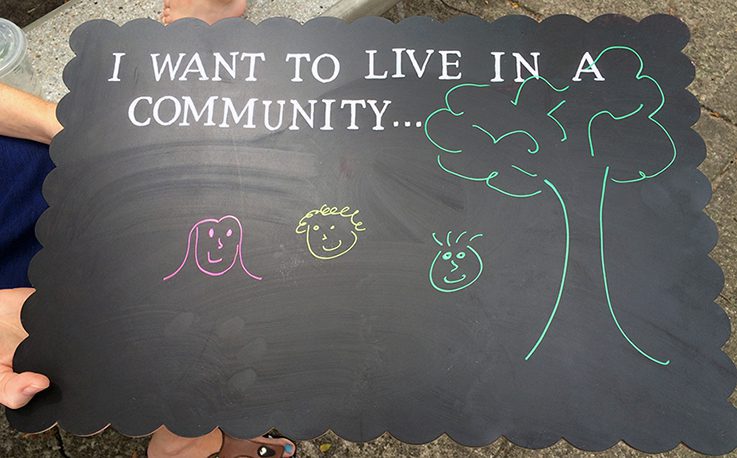Turning outward for action and change
Four years ago this October, Executive Director David J. Seleb attended a three-day workshop so influential it forever changed the way he looked at his work and the direction of the Oak Park Public Library.
“In my 28 years working in libraries, I’ve been introduced to lots of initiatives, and I’ve sat through countless conferences, webinars, and workshops,” Seleb said. “I’ve forgotten about nearly all of them, but not Harwood.”
The Harwood Institute for Public Innovation is a nonpartisan nonprofit whose mission is to combat divisions in society by teaching, coaching, and inspiring people and organizations to solve pressing problems and change how communities work together. Its signature “Turning Outward” approach has been adopted by communities around the world and by large nonprofit networks including the American Library Association.
Turning outward means using the community, not a conference room, as the central reference point for organizational decisions. Learning about the approach back in 2013, Seleb saw it was one the library could take in Oak Park.
Shared aspirations
“The difference with Harwood is its orientation and focus,” Seleb said. “Harwood has taught me that it’s not about us, it’s about the community. Without that understanding, I don’t believe we would have accomplished what we have so far.”
Implementing the Harwood approach meant “talking to people about their lives in the community and what’s important to them,” he said. “Then reflecting and seeing whether we’re being intentional and authentic, using our resources wisely, and meeting community aspirations.”
Starting in 2014, the library reached out to Oak Park residents and community partners at all three library locations through a series of Harwood Community Conversations—moderated, “kitchen-table” conversations that ask: What kind of community do you want to live in? Why is that important to you? How is that different from what you see now? What are some of the things that need to happen to create the kind of community you want?
The conversations included diverse groups of people of different ages, races, genders, and socioeconomic circumstances. “And yet, we were struck by the consistency of the messages we received and the passion with which they were delivered,” Seleb said. “When we focus on intrinsic things, we agree on a lot more than we think.”
On a mission to empower
The shared community aspirations that came from these conversations—literacy, education, diversity, inclusion, equity, health, safety, and affordability—became the foundation of the library’s strategic planning process in 2015 and led directly to the library’s priorities of engagement, learning, and stewardship and its mission to empower every voice in the community.
The initial conversation series at the library also led to dozens more outside its walls—with partner organizations, government peers, parent groups, active patrons, and people not currently using the library. And more are happening this fall.
“Over the past four years, we’ve become a very different kind of library,” Seleb said. “We are more aware and always thinking about what opportunities there are for the library to help support our community’s needs. We’ve learned the only way we can be successful is if we are driven by what our community’s real aspirations are.”

